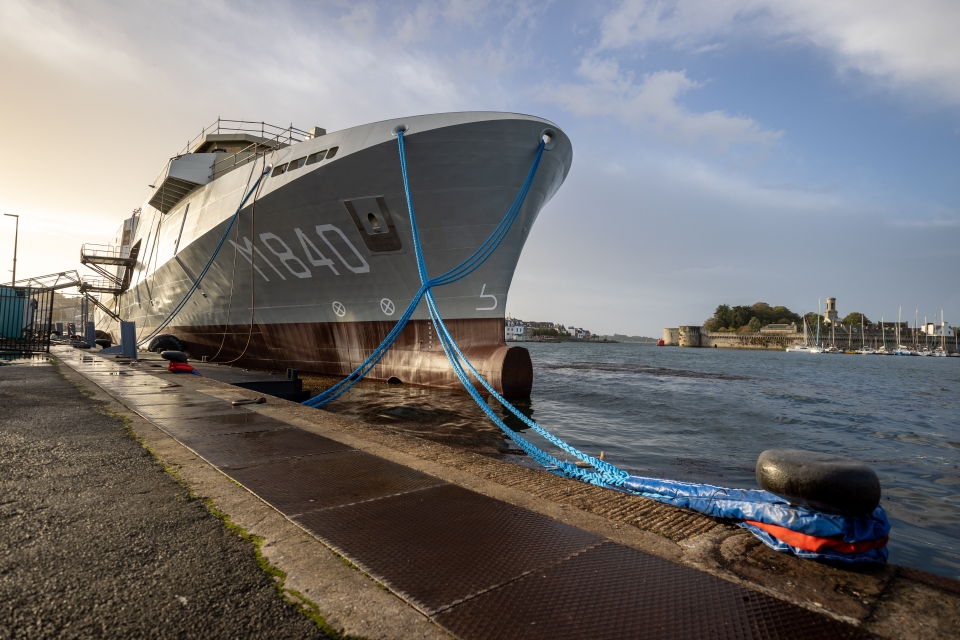Amid great interest, the Vlissingen was launched on 19 October. It is the first new Mine Countermeasure Vessel for the Royal Netherlands Navy. The ceremony took place in Concarneau, France.
The port city lies on the southern coast of Brittany, where the ship was built. The Vlissingen will become operational in 2025 and only then will it get HNLMS for its name.
The Vlissingen is one of twelve new mine-fighting vessels that the navy has jointly acquired with Belgium. Both countries will get six of them. Delivery will take place between 2024 and 2030. The construction of new mine-fighting vessels will give the Royal Netherlands Navy a modern and robust ship. It is deployable for mine-fighting operations anywhere in the world.

The new ships have a revolutionary design. This is in the systems, but also in the way they operate. For instance, the Mine Countermeasure Vessels will be equipped with modern sensors. In addition, the ships contain a toolbox of unmanned and autonomous sailing and flying drones. These can be deployed on, above and below the water. Thus, the ships and their crews no longer need to enter an area with possible sea mines or other explosives.
Also read: New Belgian Mine Countermeasure Vessel hits the water
Threat increases
‘With these ships, the Belgian and Dutch navies can make an incredible contribution to global security,’ says Commander of the Royal Netherlands Navy Vice Admiral René Tas. ‘The threat, including from sea mines, is not exactly decreasing at the moment. Communications between continents are already ninety per cent underwater and we depend on that. The Suez Canal blockage and the attack on Nordstream proved that a free sea is essential.’
The threat of sea mines is still topical. They are relatively cheap and easy to produce explosives. They can be used to block seaports, for instance. Furthermore, the seabed is still full of explosives from the First and Second World Wars. In the North Sea alone, tens of thousands of projectiles are estimated.
Also read: Construction of first new Dutch Mine Countermeasure Vessel kicks off
France joins
The contract for the programme was awarded to Belgium Naval & Robotics in 2019. This is a consortium consisting of Naval Group and ECA Group, now known as Exail. The first new Belgian minehunter, Ostend, was launched in March this year. Meanwhile, the Tournai and Scheveningen are also under construction. France has also recently joined the Belgian-Dutch programme.
The current Alkmaar-class minehunters are at the end of their service life and therefore in need of replacement. Earlier this year, Defence Minister Kajsa Ollongren announced that two Dutch ships would be donated to Ukraine after 2025.
Pictures by the Dutch Ministry of Defence.
Also read: Dutch mine countermeasure vessel Vlaardingen joins NATO fleet in Mediterranean Sea








